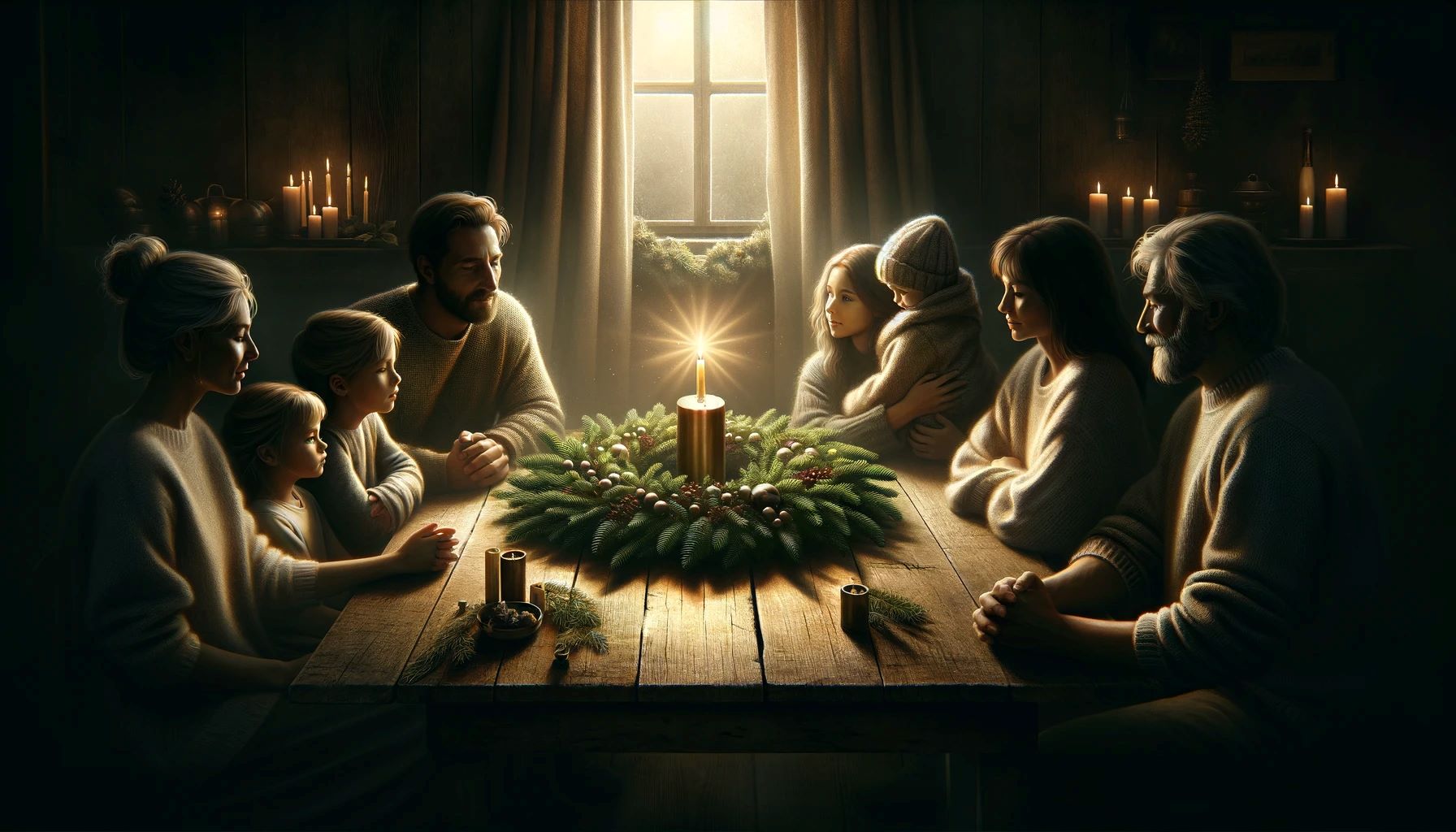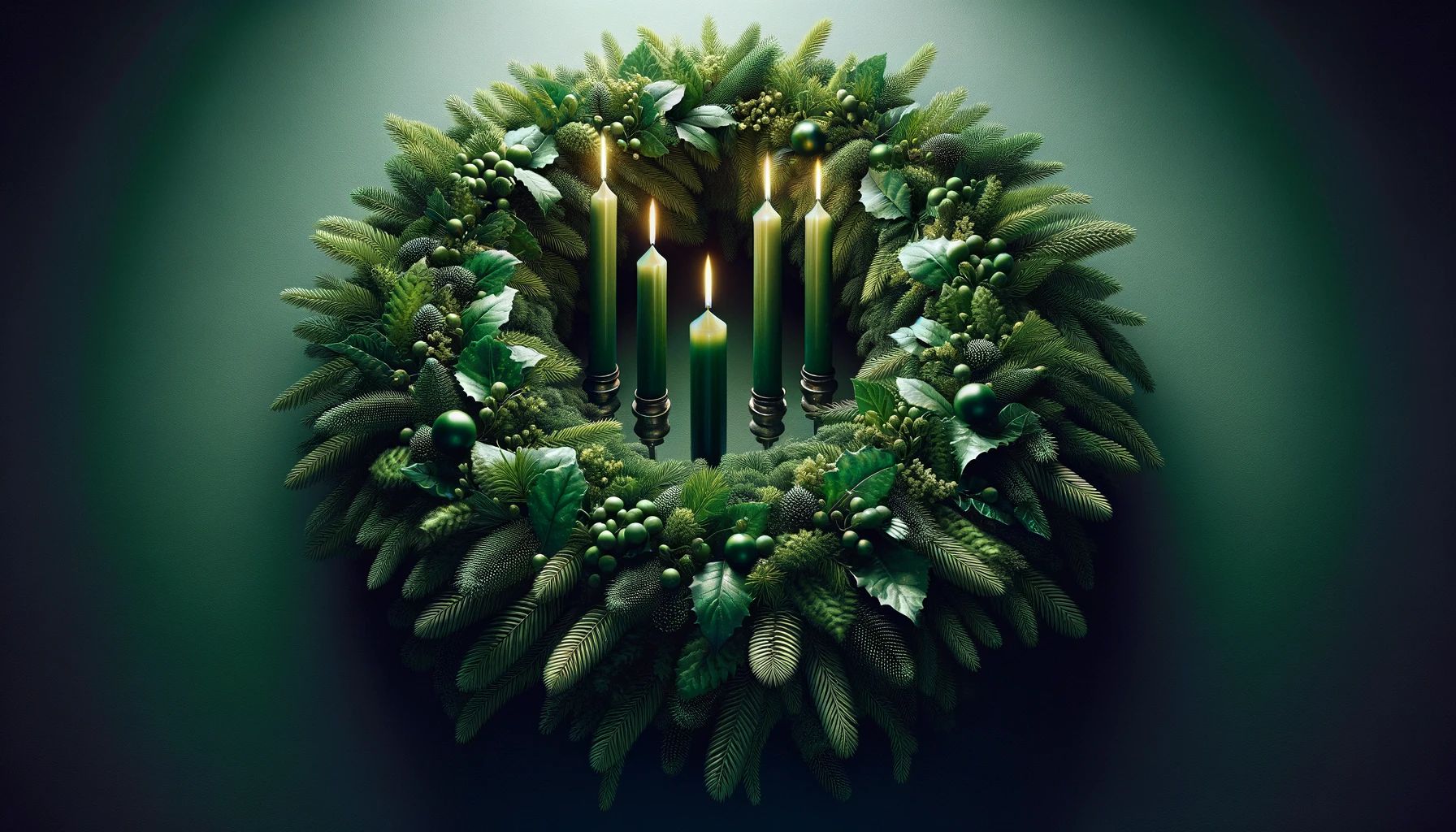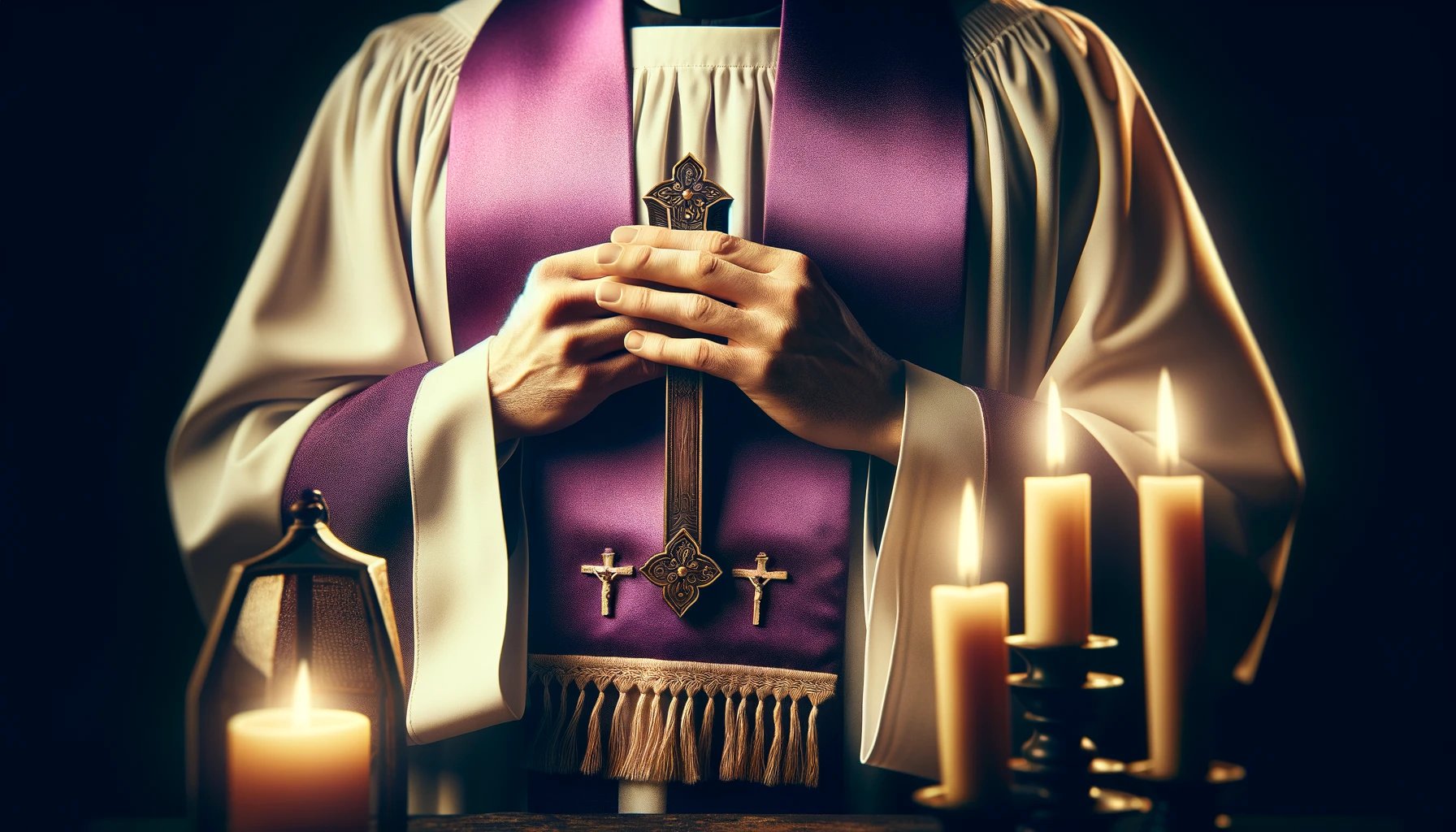Home>Special Themes>Why Is Blue The Liturgical Color For Advent


Special Themes
Why Is Blue The Liturgical Color For Advent
Published: February 13, 2024
Jason DeRose, Managing Editor at Christian.net, uses his expertise in religion and journalism to deepen understanding of faith's societal impacts. His editorial leadership, coupled with a strong academic background, enriches the platform’s diverse content, earning him recognition in both journalism and religious circles.
Discover the significance of blue as the liturgical color for Advent and its special themes in the Christian tradition. Explore the spiritual and historical reasons behind this unique tradition.
(Many of the links in this article redirect to a specific reviewed product. Your purchase of these products through affiliate links helps to generate commission for Christian.net, at no extra cost. Learn more)
Table of Contents
Introduction
The use of colors in religious practices has a profound significance, often conveying deep symbolism and spiritual meaning. In Christianity, the liturgical calendar is adorned with a spectrum of colors, each carrying its own representation and message. One such color that holds a special place in the observance of Advent is blue.
Throughout the centuries, blue has been revered as a color of tranquility, hope, and anticipation. Its presence in the context of Advent serves as a visual reminder of the spiritual journey leading up to the celebration of Christ's birth. Understanding the origins and symbolism of blue as the liturgical color for Advent unveils a rich tapestry of tradition and faith, offering a glimpse into the profound depth of Christian observance.
The significance of blue in the context of Advent extends beyond mere aesthetics; it encapsulates the essence of the season, inviting believers to reflect on the virtues of faith, patience, and the promise of redemption. As we delve into the symbolism and historical roots of blue in the Advent season, we unravel a narrative that transcends time, connecting the faithful to the enduring legacy of anticipation and spiritual preparation.
Read more: What Is The Liturgical Color For Advent
The Symbolism of Blue in Christianity
In Christianity, the use of colors holds profound significance, with each color conveying symbolic meanings that enrich the spiritual experience. Blue, in particular, has been revered as a color representing various virtues and emotions, making it a compelling choice for the liturgical calendar. The symbolism of blue in Christianity is deeply rooted in its association with themes of hope, divinity, and the divine presence.
Blue is often linked to the heavens, symbolizing the transcendence of the divine and the eternal nature of God. This celestial connection evokes a sense of awe and wonder, reminding believers of the vastness and majesty of the spiritual realm. In this context, blue serves as a visual representation of the boundless nature of God's love and grace, enveloping the faithful in a sense of profound serenity and peace.
Furthermore, blue is associated with qualities such as trust, loyalty, and wisdom. These attributes align with the core tenets of Christian faith, emphasizing the unwavering trust in God's providence and the steadfast commitment to living a life guided by divine wisdom. The color blue, therefore, serves as a reminder of the virtues that believers are called to embody, fostering a sense of spiritual introspection and renewal.
In the context of Advent, the symbolism of blue takes on added significance. As the season of anticipation and preparation for the celebration of Christ's birth, blue represents the hopeful expectation of the Messiah's coming. It encapsulates the sense of longing and yearning for the fulfillment of God's promises, inviting believers to immerse themselves in a spirit of hopeful anticipation and spiritual readiness.
The symbolism of blue in Christianity extends beyond its visual appeal; it resonates with the core beliefs and aspirations of the faithful, serving as a powerful conduit for expressing the profound mysteries of the faith. Through its association with celestial realms, virtues, and the anticipation of divine fulfillment, blue stands as a poignant symbol within the rich tapestry of Christian symbolism, inviting believers to embrace its profound significance as they journey through the sacred seasons of the liturgical calendar.
The Origins of Blue as the Liturgical Color for Advent
The origins of blue as the liturgical color for Advent can be traced back to the early traditions of the Christian church. While the use of specific colors in liturgical practices evolved over time, the incorporation of blue into the observance of Advent carries a historical and symbolic significance that continues to resonate with believers today.
The association of blue with Advent finds its roots in the rich tapestry of Christian symbolism and tradition. Historically, the color blue has been linked to themes of anticipation, hope, and the divine presence, making it an apt choice for the season of Advent. As early as the medieval period, blue was recognized for its symbolic resonance with the virtues of faith, purity, and the anticipation of Christ's coming.
The use of blue as a liturgical color gained prominence in certain Christian traditions, particularly in regions where the color held cultural and religious significance. Over time, the symbolism of blue as a representation of the heavens, the eternal nature of God, and the hopeful anticipation of Christ's birth became intertwined with the observance of Advent. This fusion of symbolism and tradition solidified the role of blue as a distinctive and evocative color within the context of the Advent season.
Furthermore, the historical context of blue as the liturgical color for Advent reflects the evolving practices and interpretations within the Christian church. As the observance of Advent evolved to encompass themes of anticipation, preparation, and spiritual introspection, the symbolism of blue resonated deeply with the spiritual aspirations of believers. The color blue came to embody the essence of Advent, encapsulating the profound longing for the fulfillment of God's promises and the hopeful anticipation of the Messiah's coming.
The origins of blue as the liturgical color for Advent, therefore, stem from a convergence of historical, cultural, and symbolic influences within the Christian tradition. This enduring legacy continues to shape the observance of Advent, inviting believers to immerse themselves in the timeless symbolism and spiritual depth embodied by the color blue as they journey through the sacred season of anticipation and preparation.
The origins of blue as the liturgical color for Advent offer a compelling testament to the enduring legacy of tradition and symbolism within the Christian faith, enriching the spiritual experience of believers as they engage with the profound mysteries and promises of the Advent season.
The Significance of Blue in Advent Today
In contemporary Christian observance, the significance of blue in Advent resonates deeply with the spiritual journey of believers as they prepare for the celebration of Christ's birth. The color blue serves as a poignant symbol, encapsulating the essence of hope, anticipation, and spiritual introspection that define the Advent season.
The presence of blue in Advent today evokes a sense of tranquility and serenity, inviting believers to immerse themselves in a spirit of contemplation and preparation. As the first color of the Advent wreath, blue sets the tone for the season, signaling the beginning of a sacred journey marked by anticipation and spiritual readiness. Its calming hue serves as a visual reminder of the peace that accompanies the hopeful expectation of Christ's coming, offering solace amidst the busyness of the holiday season.
Moreover, blue in Advent today symbolizes the enduring hope and anticipation of the Messiah's birth. As believers engage in the spiritual disciplines of prayer, reflection, and acts of kindness during Advent, the color blue serves as a beacon of hope, guiding them through a season of joyful expectation. It represents the promise of redemption and the anticipation of the fulfillment of God's divine plan, infusing the Advent season with a sense of profound significance and spiritual renewal.
Additionally, the significance of blue in Advent today extends to the broader themes of faith and trust in God's providence. The color blue serves as a visual representation of the unwavering faith that sustains believers as they await the celebration of Christ's birth. It embodies the virtues of patience, trust, and steadfastness, reminding the faithful of the enduring promises of God and the assurance of His presence in their lives.
Furthermore, blue in Advent today fosters a sense of unity and continuity within the Christian community. As believers gather in churches adorned with blue vestments and decorations, the color serves as a unifying symbol, connecting individuals in a shared journey of spiritual preparation and anticipation. It transcends cultural and linguistic barriers, uniting believers in a collective expression of faith and hope as they await the joyous celebration of Christmas.
In essence, the significance of blue in Advent today encompasses a tapestry of spiritual meanings and aspirations, enriching the observance of the season with its profound symbolism and evocative presence. As believers embark on the sacred journey of Advent, the color blue stands as a timeless symbol of hope, anticipation, and spiritual renewal, inviting them to embrace its significance as they prepare their hearts for the celebration of Christ's birth.
Conclusion
In conclusion, the significance of blue as the liturgical color for Advent transcends mere visual aesthetics, weaving a tapestry of profound symbolism and spiritual depth that enriches the observance of the season. From its historical origins to its contemporary resonance, the color blue stands as a poignant symbol of hope, anticipation, and spiritual introspection within the Christian tradition.
The symbolism of blue in Christianity, with its celestial associations and representation of virtues such as trust and wisdom, resonates deeply with the core tenets of faith, inviting believers to immerse themselves in its profound significance. As the color of the Advent season, blue serves as a visual reminder of the hopeful anticipation of Christ's birth, fostering a sense of tranquility and unity within the Christian community.
The origins of blue as the liturgical color for Advent reflect a convergence of historical, cultural, and symbolic influences, underscoring the enduring legacy of tradition within the Christian faith. Its incorporation into the observance of Advent speaks to the timeless aspirations and spiritual yearnings of believers, inviting them to embark on a sacred journey marked by anticipation and preparation.
In contemporary Christian observance, the significance of blue in Advent continues to resonate with believers, offering a sense of solace, hope, and unity as they prepare for the celebration of Christ's birth. Its presence within the Advent season serves as a beacon of enduring faith, guiding believers through a season of joyful expectation and spiritual renewal.
As believers engage in the spiritual disciplines of prayer, reflection, and acts of kindness during Advent, the color blue stands as a timeless symbol of hope, inviting them to embrace its significance as they prepare their hearts for the celebration of Christ's birth. In essence, the enduring significance of blue as the liturgical color for Advent encapsulates the timeless virtues of faith, hope, and unity, inviting believers to immerse themselves in its profound symbolism as they journey through the sacred season of anticipation and preparation.
The enduring legacy of blue as the liturgical color for Advent serves as a testament to the enduring depth and richness of Christian tradition, offering believers a visual and spiritual anchor as they navigate the sacred seasons of the liturgical calendar. As we reflect on the symbolism and significance of blue in Advent, we are reminded of the enduring promises of God and the timeless hope that sustains us as we await the joyous celebration of Christ's birth.















